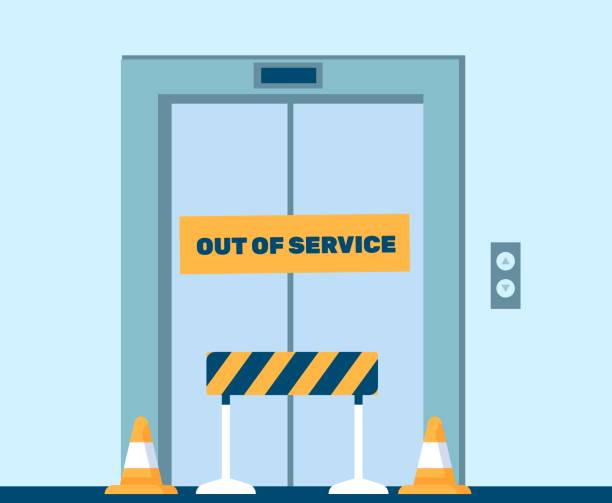Elevator Suite Britannia Street Tividale B69 2PG
01926 266127
A Comprehensive Technique to Enhancing Efficiency Via Strategic Lift Repair Work Techniques
In the world of facility administration, the effectiveness and reliability of lifts play an important duty in making certain seamless procedures. A organized and strategic method to lift fixing and upkeep is imperative to maximize performance and reduce downtime. By attending to usual lift issues, applying aggressive maintenance steps, and creating targeted repair service strategies, centers can optimize their lift systems to operate at peak performance levels. The trick to accomplishing sustained enhancement exists in using data-driven understandings to inform decision-making processes and drive continual enhancement - lift repair. This comprehensive technique to boosting lift performance via critical fixing methods holds the pledge of not just enhancing functional effectiveness however additionally extending the life expectancy of lift systems.
Importance of Lift Performance Optimization
Understanding the significance of optimizing lift performance is critical for guaranteeing effective and trustworthy vertical transportation systems in numerous structures and structures. Lifts are necessary elements of modern infrastructure, providing vertical wheelchair for owners and products within buildings of differing heights. By enhancing lift performance, building proprietors and facility supervisors can enhance user experience, enhance energy effectiveness, and boost general operational efficiency.
Efficient lift efficiency optimization includes numerous aspects, consisting of rate, capacity, power security, maintenance, and consumption needs. Properly optimized lifts can minimize wait times for users, especially in high-traffic structures, causing enhanced contentment and performance. Additionally, optimized lifts add to power savings by making use of advanced control systems and modern technologies that decrease power intake without jeopardizing performance.

Identifying Common Lift Issues
Identifying typical lift problems is important for maintaining the functional performance and security of vertical transport systems in structures. This problem can be a measure of troubles with the lift's electric motor, control system, or even the positioning of the lift auto.
One more common lift concern is odd sounds originating from the lift shaft or equipment area. These noises can vary from grinding or scuffing audios to loud clunking sounds, every one of which might signify underlying mechanical problems that need immediate attention. In addition, regular door breakdowns, such as doors closed or shutting properly, can interrupt the smooth flow of passengers and pose security dangers.
Executing Aggressive Maintenance Actions
To optimize the efficiency and long life of lift systems, positive upkeep measures play a critical role in guaranteeing operational reliability and security. lift breakdown. Executing proactive upkeep involves systematically examining, servicing, and repairing elements prior to they fall short, hence stopping expensive downtime and possible security threats. Routinely arranged inspections can help recognize small issues before they escalate right into major issues, eventually prolonging the life expectancy of lift systems
One key aspect of aggressive upkeep is creating a comprehensive maintenance routine based on maker referrals and sector ideal methods. This schedule must outline tasks such as lubrication, positioning checks, and part replacements at defined periods. Furthermore, carrying out condition tracking methods, such as resonance analysis and thermal imaging, can assist find very early indications of wear or breakdown.
Moreover, training upkeep team on proper assessment methods and precautionary maintenance procedures is vital for the successful implementation of proactive upkeep procedures. By fostering a society of positive upkeep within an organization, lift systems can operate at peak performance levels, decreasing disturbances and making certain the security of customers.
Developing Targeted Repair Work Strategies
Upon evaluating the maintenance documents and efficiency data, the engineering group can establish targeted repair strategies to address particular issues and enhance lift system functionality. These repair strategies are customized to the determined troubles, guaranteeing that sources are concentrated on resolving essential concerns effectively. By focusing on repairs based on their impact on efficiency and safety, the targeted repair strategies aid decrease downtime and maintenance costs while optimizing the lift system's integrity.
Establishing these strategies involves a comprehensive evaluation of the lift system elements, consisting of electric motors, cables, brakes, and control systems. Through this detailed evaluation, the engineering group can figure out check it out the origin of any kind of malfunctions or degradation in performance. This details is after that utilized read review to develop a roadmap for the fixing process, describing the required steps, timeline, and resources called for to resolve each problem successfully.
In addition, targeted repair strategies might include preventative steps to boost the lift system's durability and performance. By proactively resolving potential concerns prior to they escalate, these strategies add to the overall effectiveness and safety and security of the lift system.
Making Use Of Data-Driven Insights
Utilizing the power of data-driven understandings is important in enhancing lift system efficiency and maintenance effectiveness. These anticipating maintenance approaches assist prevent unexpected break downs, reduce downtime, and expand the lifespan of lift systems.

Final Thought
In final thought, optimizing lift efficiency is crucial for making sure performance and security in buildings. By recognizing typical lift issues, implementing aggressive maintenance actions, establishing targeted fixing plans, and utilizing data-driven insights, organizations can improve efficiency and lessen downtime. It is very important to take a detailed method to raise repair work strategies to make best use of operational performance and ensure the longevity of lift systems.
By attending to common lift concerns, applying aggressive maintenance measures, and try this website establishing targeted repair strategies, centers can enhance their lift systems to operate at peak efficiency levels.One more common lift issue is odd sounds rising from the lift shaft or equipment space.Upon analyzing the maintenance records and performance information, the design group can develop targeted repair work plans to enhance and address details issues lift system capability. By prioritizing repair services based on their influence on efficiency and safety, the targeted repair service strategies help minimize downtime and upkeep expenses while optimizing the lift system's integrity.
It is crucial to take an extensive strategy to raise repair service strategies to optimize operational efficiency and make sure the durability of lift systems.